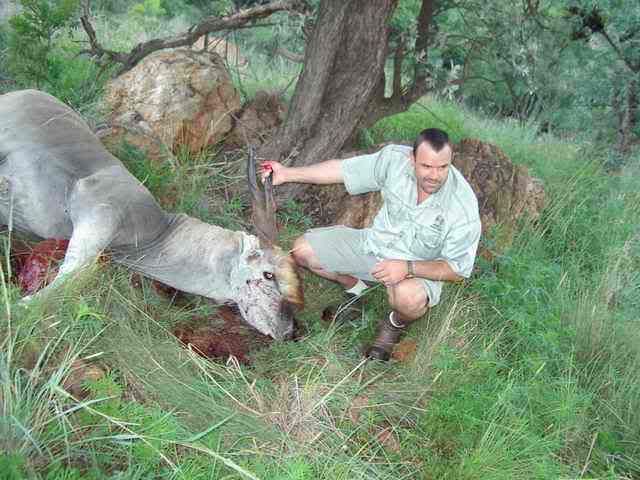| McLarenSafaris |
| (.224 member) |
| 09/01/09 06:09 PM |
|
|
The lovely pictures of worthy eland trophies posted under tophet1's thread made me think about eland trophy judgement again.

In my book of definitions a “trophy” means: A male [or female?] animal that is [well?] past the age where he can hope to enjoy breeding success. If the old animal then also has long horns/tusks or big whatever, that’s a bonus! If it is big enough to make the "XYZ Record book", well, then you are really lucky!

This eland has relatively small horns, but judging by the development of the tuft of forehead hair I would say he is old and a worthy trophy! Is he? Incidentally the eland was hunted as a herd management effort – he has been the dominant breeding bull of a confined herd for a number of years – and he sired only male offspring! It led to the decision to take him out, irrespective of his age or trophy size. There are some of his male offspring that are also going to be taken out to prevent the breeding of male-only offspring. Anyone interested in a herd management eland hunt to test the accuracy of advice given to tophet1 at a very nominal cost of R 3000?

How can a live eland potential trophy be field judged for age? My knowledge says that a fully developed dark tuft of hair on the forehead indicates old age. Also the loss of body hair that results in a “blue tinge” to the color indicates old age. Blunt and worn horns are also an indication of old age. But are there exceptions? More accurately; are there regular exceptions to these ‘rules’? Can one judge age by the direction of the horn spiral? Size of the dewlap? Body size?

A related question: Are the signs of old age the same in Cape and Livingstone [and Lord Derby]?
In good hunting.
Andrew McLaren